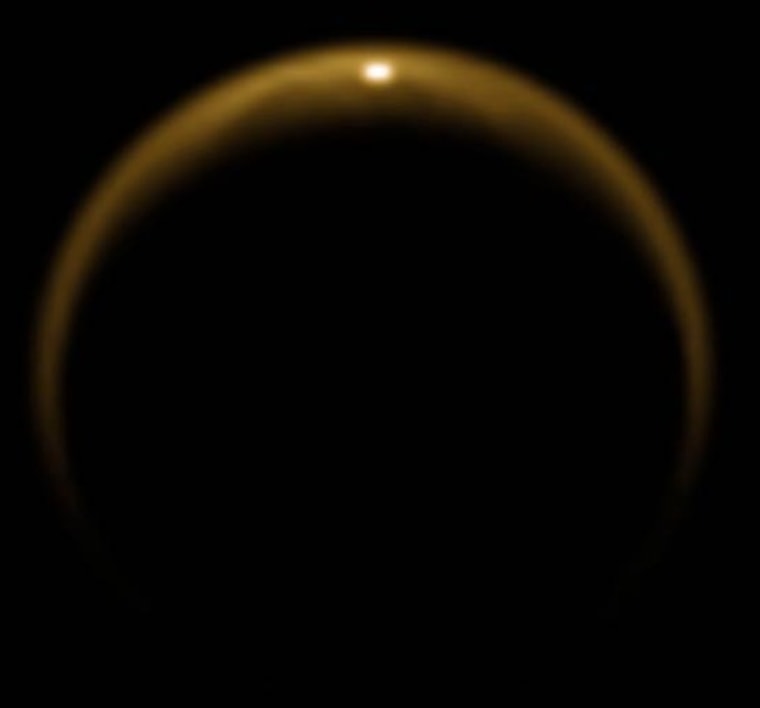A flash of sunlight reflecting off a hydrocarbon lake on the surface of Saturn's moon Titan has been spotted by NASA's Cassini spacecraft, confirming the presence of liquid on a part of the surface of the hazy satellite with many lake-shaped basins.
The image taken by Cassini is the first that shows such a glint of light off liquid from another world.
"Titan joins Earth in this unique respect," said Bob Pappalardo, Cassini project scientist, based at NASA's Jet Propulsion Laboratory in Pasadena, Calif.
The Cassini image processing team pinpointed the reflection at the southern shoreline of a lake called Kraken Mare. The sprawling Kraken Mare covers about 150,000 square miles (nearly 400,000 square km), an area larger than the Caspian Sea, the largest lake on Earth.
The liquid, like that filling other lakes on Titan's surface, isn't water, as it is on Earth, but methane and ethane – molecules of carbon and hydrogen atoms. For 20 years scientists have theorized that these liquids existed on Titan's surface, and it is the only other body in the solar system besides Earth that is known to have liquid on its surface.
These stores of liquid hydrocarbons on Titan are of interest to scientists because of the potential for these chemicals to create an environment supportive of life.
In 2008, Cassini scientists using infrared data confirmed the presence of liquid in Ontario Lacus, the largest lake in Titan's southern hemisphere. But they were still looking for the smoking gun to confirm liquid in the northern hemisphere, where the basins are larger and more numerous.
Cassini scientists had been looking for the glint, also known as a specular reflection, from a hydrocarbon lake since the spacecraft began orbiting Saturn in 2004. But until recently Titan's northern hemisphere had been veiled in winter darkness.
With the seasons changing now, and the return of sunlight to the northern hemisphere, Cassini was able to snap a picture of sunlight glinting off the surface of a lake on July 8.
"This one image communicates so much about Titan — a thick atmosphere, surface lakes and an otherworldliness," Pappalardo said. "It's an unsettling combination of strangeness yet similarity to Earth. This picture is one of Cassini's iconic images."
Though Titan's surface is usually shrouded from view by the moon's thick, hazy atmosphere, infrared light is able to pass through, which is how Cassini saw the glint.
